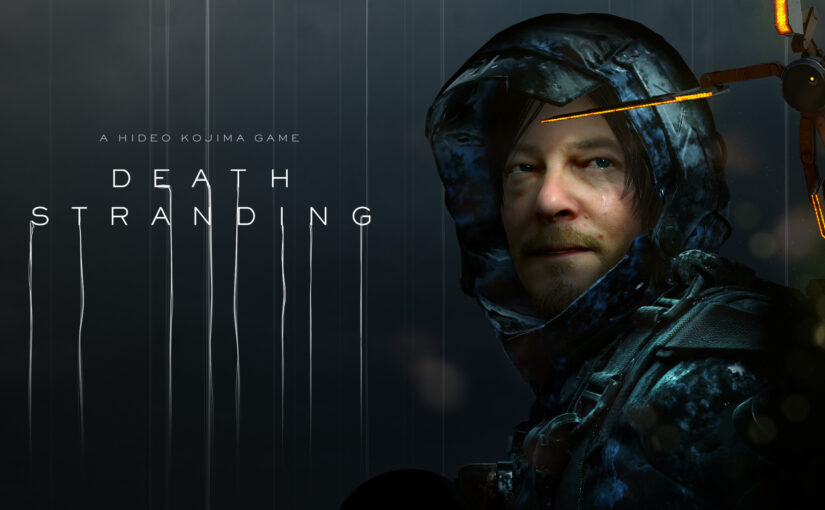Table of Contents
1. Introduction
Death Stranding is a third-person game created by Kojima Productions, which producer Hideo Kojima calls a Social bonding game.
The player plays as Sam, a courier belonging to the Bridge. After the outbreak of Death Stranding, the surface is no longer suitable for human survival, and only the unique courier can move safely outside. The player takes on this role, traveling west from the eastern United States, reconnecting the entire country to the Cairol network and confronting the enemies planning to cause the bio-extinction event along the way.
The game creates a unique connected experience by limiting player resource caps and asynchronous online play. This experience gives players the spiritual satisfaction of finding themselves ” being needed “.
2. Creating Small Impulses on Interest Curve
In most games, player emotion is directly related to the tension of the storyline and the rising difficulty of the combat. When plotted on a normal player experience curve, Death Stranding looks like this, with player emotions constantly changing as the storyline progresses.

But in Death Stranding, the asynchronous online system creates a unique connection experience for players, and the appreciation system creates another level of mood swings, even as players feel more pleasure from other players than the game itself.

In terms of the overall flow of the game.
In the first two chapters of the game, the game teaches the player a lot of unfamiliar concepts, while the player has very few resources, struggles to manage courses of action and has a very depressing atmosphere.
From the third chapter onwards, the player is given carriers and exoskeletons to aid in the action, while getting hold of more helpful buildings and props. At this point the player has more control over the delivery routes and can gain appreciation from other players through the buildings, allowing for more positive emotional feedback.
When building highways, the lack of supplies becomes apparent to the player, and incorrect route planning can put the player in a dilemma. The player’s emotions are rekindled when the online system secretly merges other players’ resources to aid in the construction of the highway and allows the player to lend a helping hand to other compatriots.
Once inside the snowy mountains, the player is unable to use vehicles to move around, returning to the way things were at the start of the game, although a more convenient zip line construction is soon unlocked and allows the player to go back over the snowy mountains to the previous area, creating a dramatic change of pace.
Towards the end of the game, the continuous large boss battles are outstandingly well executed, giving the player a new dimension.
This well-designed content aside, the players’ appreciation of each other forms a subtle fluctuation in the experience curve.

3. Innovative mechanisms
3.1 Resource management from A to B
Most traditional games are made in a format where the player accepts a mission at point A, travels to point B to complete it, and sets up points of interest in between.
Death Stranding, on the other hand, places the player’s experience on the journey from point A to point B. The core of the experience is how the player gets from A to B. To enhance this experience, the game creates a unique management system. To enhance this experience, the game has created a unique management system that is hidden within the courier system.
I have divided it into three categories.
Resource Management
Weight and centre of gravity:
Players can customise the placement of goods in transit, but their own load capacity is limited. The load can be enhanced with exoskeletons, but there are missions that require multiple packages, requiring the player to make trade-offs.
Players may encounter urgently needed supplies during transport and will not be able to carry them if there is insufficient load space.
The way goods are placed affects the character’s centre of gravity, and when the centre of gravity is shifted, the player needs to spend more effort on manoeuvres to keep the character balanced.
Shared space for equipment and goods
Players need ladders, climbing cables and other props to cross obstacles in the route, which share storage space and load with the cargo. The player needs to predict and allocate the number of props on the transport route.
There are combat scenarios where weapons also occupy storage space and players need to judge whether they need to carry weapons depending on their route.
Special mission requirements
Some tasks have additional requirements on the condition of the goods, for example: pizzas need to be stored flat and not submerged in water; valuable items can be damaged or even explode after repeated collisions, etc.
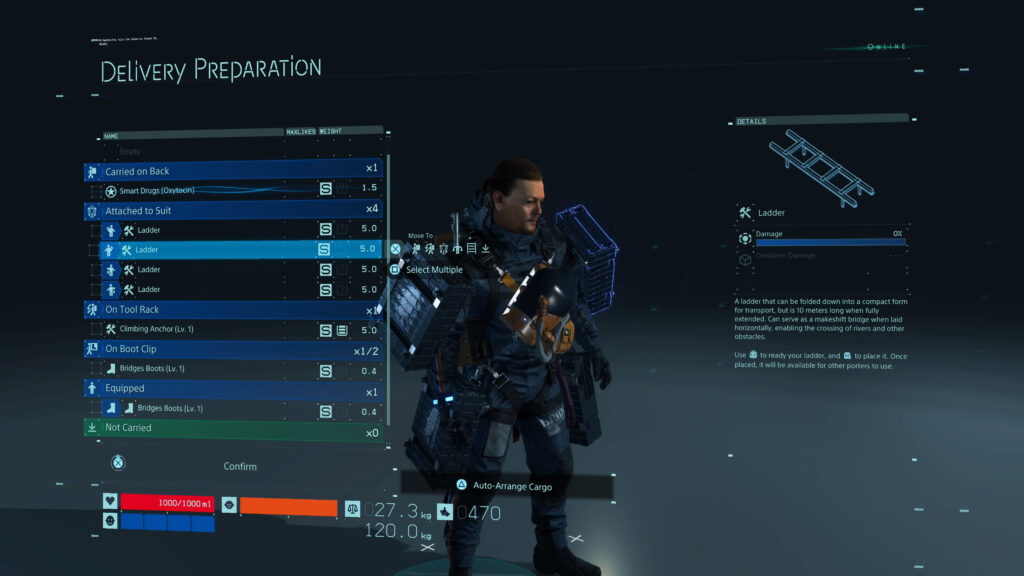
Route management
Potential enemies
There are two types of enemies in the game, BT and Mules, and the player needs to choose whether to move around them or not depending on the load.
There are differences in the weapons and equipment used against the two types of enemy, and players will need to allocate equipment for both sides.
Special weather
There is special weather in the game and the weather forecast is unlocked when the player arrives at the weather station, so the player needs to choose a transport route based on the weather.
Rainy weather can accelerate damage to goods and is often accompanied by BT.
Terrain
Up and downhill terrain can affect your ability to move, and you will need to have more props to keep you safe if there is a lot of this type of terrain on your route.
Rivers and mountains need to be crossed with props or buildings and players need to decide whether to carry construction resources depending on the situation.
Vehicles
There are two types of vehicles in the game: motorbikes and trucks. They have different carrying capacities, passing performance and range, so you will need to choose according to your objectives.
The game’s highways do not allow you to reach all target points, and goods stored on the vehicles may disappear due to the distance, so you cannot rely on them.
Buildings
Other players’ structures will appear in areas that are already connected to the network, and players can choose to carry resources to build structures on the routes they must take.
Routes built with structures such as bridges make it easier for players to drive their vehicles through.
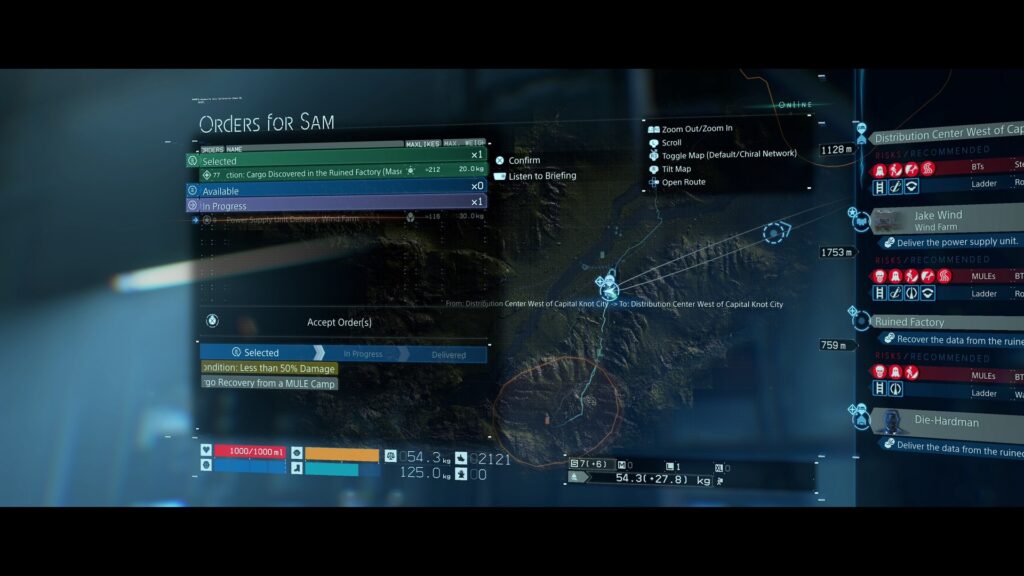
Capability Management
Exoskeletons
There are three exoskeletons in the game, different exoskeletons are equipped for different situations and will directly affect the player’s ability to transport them.
Stamina
Stamina directly affects the player’s ability to move, with a lower stamina limit making it difficult to carry cargo across terrain such as rivers.
Player stamina is directly related to stamina and affects how dangerous a player is in the event of an encounter.
Stamina can be restored by building or drinking water and is directly related to the player’s route planning.
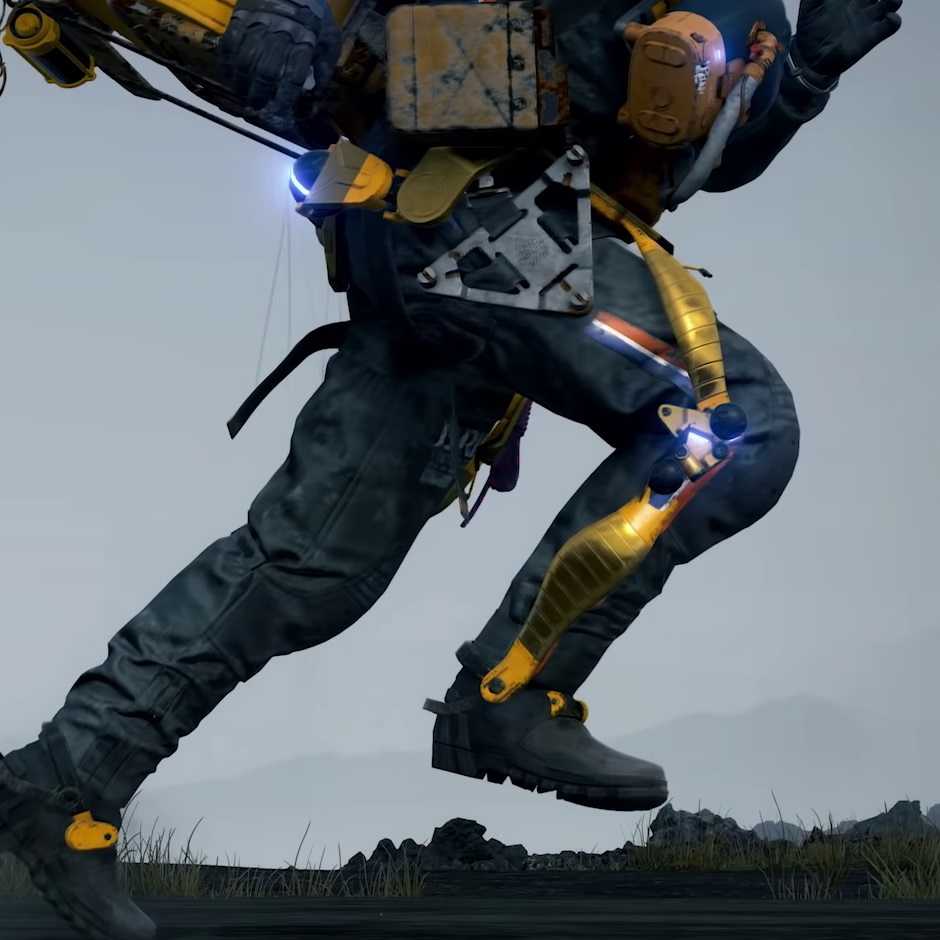
3.2 Asynchronous online
Death Stranding uses asynchronous online functionality, where players will play the game solo, but other players’ banners, buildings, and supplies will appear in the game world, and players can praise each other.
Compared to Dark Souls’ admonition system, Death Stranding also goes a step further in the following areas.
The creation of roads
The game counts the routes taken by players around the world, and when players frequently choose the same route, the vegetation on that route disappears, exposing the ground and creating the feeling of a real route.
This detail not only shows how the world has changed but also helps later new players to quickly discover common routes.
On the other hand, this mechanic demonstrates how a human society full of rules can be created from nothing.
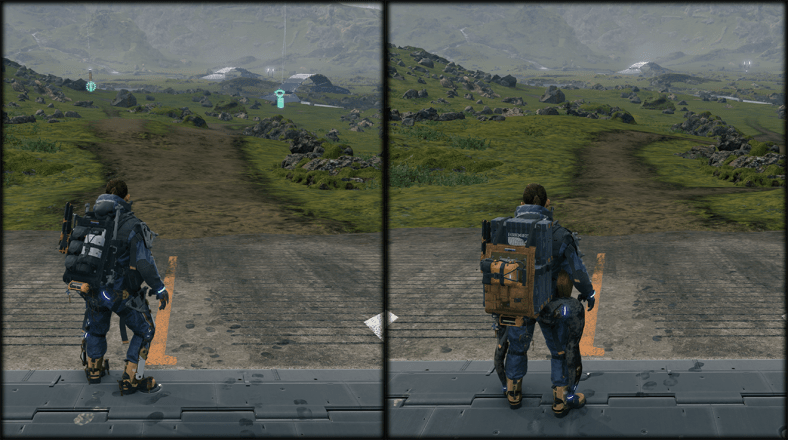
Much visible Likes
Signs, buildings and props placed by players may be displayed simultaneously in other players’ worlds and all may receive likes.
When a player logs into the game for the first time each day, the game will alert them to how many likes they have received. Players will also receive such notifications periodically during continuous play.
There is an ability in the character level that is directly linked to the number of likes. The likes that players give to each other can feed directly into the game’s gains and losses.
SOS system
Players can post online requests for resources when they are in trouble.
When other players receive the request, they can choose to transport supplies to the nearest resource storage point.
This mutual help is entirely voluntary on the part of the players. The social experience created by players actively choosing to offer help is far stronger than forced co-operative tasks.
4. Enhancing the experience
Death Stranding creates a uniquely connected experience through mechanics that are enhanced by scenario design and mission design.
Scenario design
As a semi-open world game, the game uses multiple triangular-shaped terrains to shade each other and create visual gravity to motivate players to explore.
Although the game is open, there is little visible vegetation. The ground is covered in short moss-like plants, creating open vistas and making player buildings and signs more visible.
The moss-like plant-covered ground allows the player to visualize the real terrain and gives the player clearer information for route planning.
The game’s highways do not connect all mission points, requiring the player to explore the route on foot with a lighter load at the end of the road.
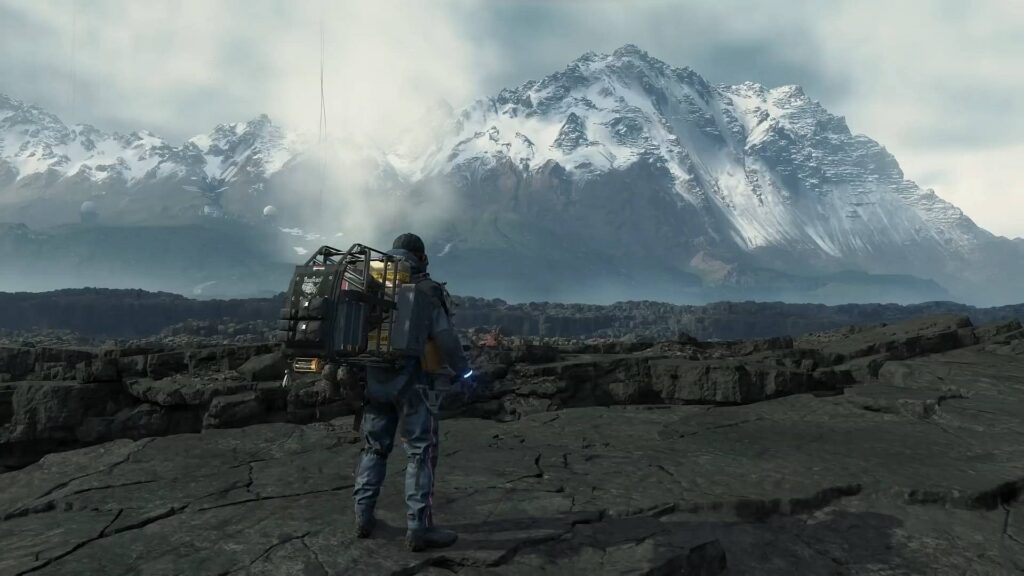
Mission design
Players intercepting missions that require them to cross large distances in-game will be able to easily spot carriers near the mission acceptance point. These carriers may belong to other players or NPCs, encouraging players to make connections by actively displaying shared content.
During some missions, players will receive likes from NPCs. The humorous and natural way in which the NPCs give compliments in the storyline shows this slightly abrupt in-game setting in a natural way, reinforcing the player’s acceptance of this mechanic.
In the main combat missions, players are often not adequately resupplied for battle. When the player is in danger, characters with the names of other players appear in the battle scenes to provide resources to the player. The game internally increases the amount of exposure players have to each other, reinforcing the connection between players.

5. Epilogue
Death Stranding is a game that focuses on the player experience, which is a far cry from the many games that sell well but don’t really innovate. But at the same time, it has always been a game that has received polarising reviews. In my opinion, there are three main reasons for this situation.
Slow pacing in the early stages: Within a month of the game’s release, 75% of people had made it through Chapter 2, but only 25% had completed Chapter 3. The game throws a lot of obscure settings at the player early on, while the player’s abilities are not improved for a long time, making it easy to get confused and uninteresting.
Low Combat Difficulty: While the focus of the game is not on combat, the low difficulty of the combat section detracts from the player’s sense of immersion in the plot. Even towards the end of the game, the monsters the player encounters are visually overwhelming, but the desire to attack is minimal.
Poor Streaming Experience: Many players first learned about the game through the live stream, but the complex mechanics made it difficult for viewers to get a sense of the fun. When this group of players share their opinions online, it can create conflict with those who have played the game.
With the launch of Death Stranding: Director’s Cut, turret buildings that can be acquired in the early-mid stages have been added, as well as new combat styles and weapons that improve the player’s experience in the early stages and new sneak levels that add to the richness of the game.
It currently has a 53% trophy capture rate for Chapter 3 on the Playstation and a 49% trophy capture rate for the final pass, a stark contrast from the beginning of the release in the test of time.

